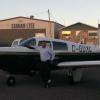Advice on climbing to FL240
-
Members Online
- Slick Nick
- ziggysanchez
- Guillaume
- MooneyMax
- skykrawler
- Hank
- Fly Boomer
- McMooney
- Marc_B
- Vance Harral
- turbofan
- cbarry
- Ron McBride
- good2eat
- TCC
- redbaron1982
- Taz
- A64Pilot
- Wingfree
- KLRDMD
- FlyingScot
- ElkoRandy20J
- Mike Will Fly It
- CAV Ice
- PeterRus
- Rick Junkin
- jsclafani
- BlueDun
- jcolgan
- flyboy0681
- TMitchell
- Stanton R
- Marc B
- Huckster79
- kaba
- Carl Everitt
- ProtoFly
- Barneyw
- Flyler
- Utah20Gflyer
- BrianWilkins


Recommended Posts
Join the conversation
You can post now and register later. If you have an account, sign in now to post with your account.